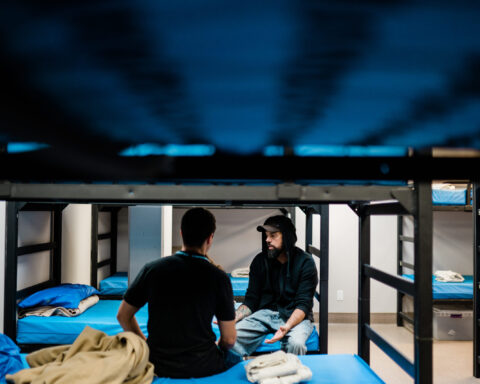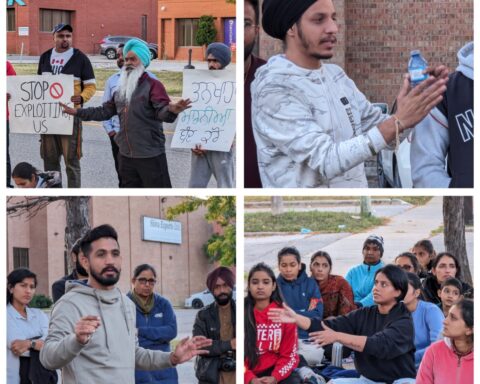This year is the 60th anniversary of the landmark Supreme Court ruling, Brown v. Board of Education, that desegregated American public schools. To mark this anniversary, Americans are reflecting on the progress that has been made for Black students since that time. This anniversary has also focused attention on the Teacher Diversity Gap and the need for more racialized teachers.
This year is also the 50th anniversary of a similar milestone in Ontario. In 1964, Leonard Braithwaite, Ontario’s first Black MPP, led the repeal of the 114-year-old provision of the Separate Schools Act that allowed for segregated schools for racialized students. Unfortunately this milestone has gone largely unnoticed in Ontario.
The benefit to students of closing the gap was evident in the wake of the shooting death of Abshir Hassan, a supply teacher with the Toronto District School Board. News reports quote administrators, students and parents calling Hassan a “good” man and “beloved” teacher. They noted that he was able to connect with students in the priority neighbourhood in which he worked largely because he was from the community and of the same ethno-racial background as many of the students. Students felt that he was committed to their success and understood the challenges they face growing up Black and Somali in Toronto.
The provincial government’s 2009 Equity and Inclusive Education policy recognizes the need for greater diversity among teachers. It requires that school boards “implement positive employment practices that support equitable hiring, mentoring, retention, promotion, and succession planning.” However, while the policy notes that board staff “should reflect the diversity within the community,” there is no requirement that boards collect data, analyze the diversity gap or implement efforts to close the gap.
The gap could get worse as the population becomes more diverse. While we currently face a large Teacher Diversity Gap, the province is rapidly becoming more diverse.
So, how well are Ontario schools doing to reflect the increasing diversity of the student population? And, how does the Teacher Diversity Gap compare to the United States?
Reflecting diversity
To answer these questions we have calculated the Teacher Diversity Gap for Ontario and the Toronto Census Metropolitan Area (CMA), and compared these to the gap for the United States overall and for a number of states. The Teacher Diversity Gap is the comparison of the percentage of racialized teachers to the percentage of racialized students. A value of 1.0 indicates that there is no gap and that the diversity among the teaching population reflects the diversity among the student population. The smaller the number, the more significant the gap.
The challenge in conducting this analysis is that while data is available for the United States, the same data is not readily available in Canada. For the United States, teacher and student demographics are available by state and race. While there is data on the number of teachers in Ontario and the Toronto CMA, the figures include all teachers, including those working in private schools. The data on the number of racialized students is not readily available, so the proportion of racial minorities in the total population is used instead.
Students felt that Abshir Hassan was committed to their success and understood the challenges they face growing up Black and Somali in Toronto.
The chart shows the Teacher Diversity Gap for Ontario and the Toronto CMA, and compares it to the gap for the United States and specific states.
The data shows that:
- The demographic divide between teachers and students in Ontario and the Toronto CMA is large. In Ontario, racial minorities represent 26% of the population, yet make up only 10% of the 70,520 secondary school teachers and 9% of the 117,905 elementary school and kindergarten teachers. In the Toronto CMA, racial minorities represent 47% of the population, yet make up 20% of secondary school teachers and 18% of elementary school and kindergarten teachers.
- The Teacher Diversity Gap is worse for Ontario and the Toronto CMA than for the United States overall. While Ontario and the Toronto CMA are doing a slightly better job of reflecting the diversity of the student population than states such as Ohio, we are also doing worse than other states, including New York, Mississippi, Alabama and Louisiana. The Teacher Diversity Gap for the United States as a whole is slightly smaller than the gap for Ontario and the Toronto CMA.
- The Teacher Diversity Gap is no better for the Toronto CMA than it is for Ontario. The Teacher Diversity Gap in the Toronto CMA is .40, while the gap for Ontario is .38. This means that the demographic divide between teachers and students is just about the same for students in the Toronto CMA as it is for students in the rest of the province.
- The gap could get worse as the population becomes more diverse. While we currently face a large Teacher Diversity Gap, the province is rapidly becoming more diverse. Statistics Canada data shows that racial minorities currently represent 26% of the Ontario population and 47% of the Toronto CMA population. Statistics Canada projects that by 2031 racial minorities could make up 63% of the Toronto CMA population. As such, without significant changes to the composition of the teaching population, the Teacher Diversity Gap may widen.
In the Toronto CMA, racial minorities represent 47% of the population, yet make up 20% of secondary school teachers and 18% of elementary school and kindergarten teachers.
There are many reasons to close the Teacher Diversity Gap and a lot of evidence that shows that racialized students do better academically with racialized teachers. There are also many policy options to close the demographic divide that exists in Ontario schools. Given this, why aren’t the province and the school boards doing more to bring more racialized teachers into the classroom?
Tana Turner is Principal of Turner Consulting Group Inc., an equity, diversity and inclusion consultancy firm in Toronto.




